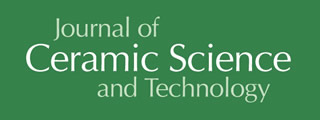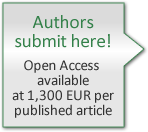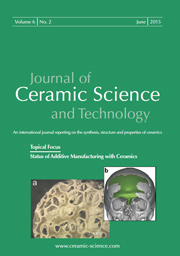Articles
All articles | Recent articles
Experimental Determination of the Maximum Allowable Stresses for High-Power Piezoelectric Generators
H. Abramovich1, E. Tsikchotsky1, G. Klein2
1 Faculty of Aerospace Engineering, Technion, I.I.T., 32000 Haifa, Israel
2 Innowattech Ltd, 32000 Haifa, Israel
received March 13, 2013, received in revised form June 06, 2013, accepted June 18, 2013
Vol. 4, No. 3, Pages 131-136 DOI: 10.4416/JCST2013-00006
Abstract
High mechanical loads and/or electric fields or a combination of both tractions may lead to significant changes in the properties and parameters of PZT ceramics owing to the ferro-elastic processes in ceramics, domain wall motion, switching domains and the restructuring of the domain structures. This study uses well-designed tests to investigate the various parameters of high-power multi-element piezoelectric generators made from PZT ceramic under long-term cyclic external mechanical loading and presents maximum allowable working mechanical stresses. It has been shown that a stress of 30 MPa can be considered as a safe-side stress level, while 50 MPa can be regarded as the highest applicable stress; above or near 50 MPa, the PZT properties are substantially reduced, yielding a less effective high-power generator.
![]() Download Full Article (PDF)
Download Full Article (PDF)
Keywords
PZT, power generator, stress, cyclic loads, electrical resistance
References
1 Lines, M.E., Glass, A.M.: Principles and applications of ferroelectrics and related materials, University Press, 1977.
2 Burfoot, J., Taylor C.G.W.: Polar dielectrics and their applications, University of California. New Jersey, USA. 1979.
3 Luchaninov, A.G.: The piezoelectric effect in the nonpolar heterogeneous ferroelectric materials, in Russian, State Architectural and Construction Academy of Volgograd, Volgograd, Russia, 2002.
4 Ren, K., Liu, Y., Geng, X., Zhang, Q.M.: Single crystal PMN-PT/Epoxy 1 – 3 composite for energy-harvesting application, IEEE T. Ultrason. Ferr., 53, [3], 631 – 637, (2006).
5 Yang, G., Lin, S.F., Ren, W., Mukherjee, B.K.: Effect of uniaxial stress on the piezoelectric, dielectric, and mechanical properties of lead zirconate titanate piezoceramics, Ferroelectrics, 262, 1181 – 1186, (2001).
6 Mitrovich, M. Carman, G.P., Straub, F.K.: Response of piezoelectric stack actuators under combined electro-mechanical loading, Int. J. Solids Struct., 38, 4357 – 4374, (2001).
7 Sundarakannan, B., Kakimoto, K., Ohsato, H.: Frequency and temperature dependent dielectric and conductivity behavior of KNbO3 ceramics, J. Appl. Phys., 94, [8], 5182 – 5187, (2003).
8 Kamlah, M.: Ferroelectric and ferroelectric piezoceramics modeling of electromechanical hysteresis phenomena, Continuum Mech. Therm., 13, [4], 219 – 268, (2001).
9 Calderon-Moreno, J.M.: Stress induced domain switching of PZT in compression tests, Mat. Sci. Eng. A, 315, 227 – 230, (2001).
10 Cheng, B.L., Reece, M.J.: Stress relaxation and estimation of activation volume in a commercial hard PZT piezoelectric ceramics, B. Mater. Sci., 24, [2], 165 – 167, (2001).
11 Priya, S., Inman D.J.: Energy harvesting technologies, Springer, London, 2008.
12 Abramovich, H., Millgrom, C., Harash, E., Azulay, L.E., Amit, U.: Multi-layer modular energy harvesting apparatus, System and Method, USA Patent # 2010/0045111 A1. Publication date: Feb. 25, 2010.
13 Bedekar, V., Oliver, J., Priya, S.: Design and fabrication of bimorph transducer for optimal vibration energy harvesting, IEEE T. Ultrason. Ferr., 57, [7], 1513 – 1523, (2010).
14 Platt, S.R., Farritor, S., Haider, H.: On low-frequency electric power generation with PZT ceramics, IEEE/ASME T. Mech., 10, [2], 240 – 252, (2005).
Copyright
Göller Verlag GmbH


